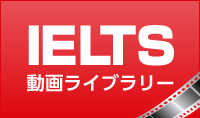The mixed charts illustrate the monthly rainfall (in millimeters) and water usage (in percentages) in a certain region over the course of a year. The data highlights the relationship between rainfall patterns and water consumption.
Rainfall shows a clear seasonal variation, peaking in July at 180 mm and reaching its lowest level in February at 65 mm. The trend indicates higher precipitation during the summer months, with consistent levels above 150 mm from June to August. In contrast, rainfall remains below 100 mm during the winter and early spring months.
Water usage mirrors the rainfall pattern, with the highest consumption observed in July at 70%. This is likely due to increased agricultural activity, irrigation demands, and recreational water usage during the rainy season. Conversely, water usage is lowest in February at 25%, coinciding with the driest month.
The relationship between rainfall and water usage suggests that precipitation significantly influences water demand. During periods of high rainfall, water is more readily available for both agricultural and domestic use. In drier months, lower usage may reflect either conservation efforts or reduced water supply.
In conclusion, the charts emphasize the importance of managing water resources effectively to balance supply and demand, particularly in regions with pronounced seasonal rainfall fluctuations.
(206 Words)
こちらは、月ごとの降水量と水使用率を比較した複合グラフです。
- 棒グラフ(青色): 月ごとの降水量 (mm) を示しています。夏の月に降水量が増加している傾向が見られます。
- 折れ線グラフ(オレンジ色): 水使用率 (%) を示しています。降水量が多い月ほど水使用率が減少しているようです。
このグラフは、降水量と水使用率の間に相関がある可能性を視覚的に捉えるのに役立ちます。


















